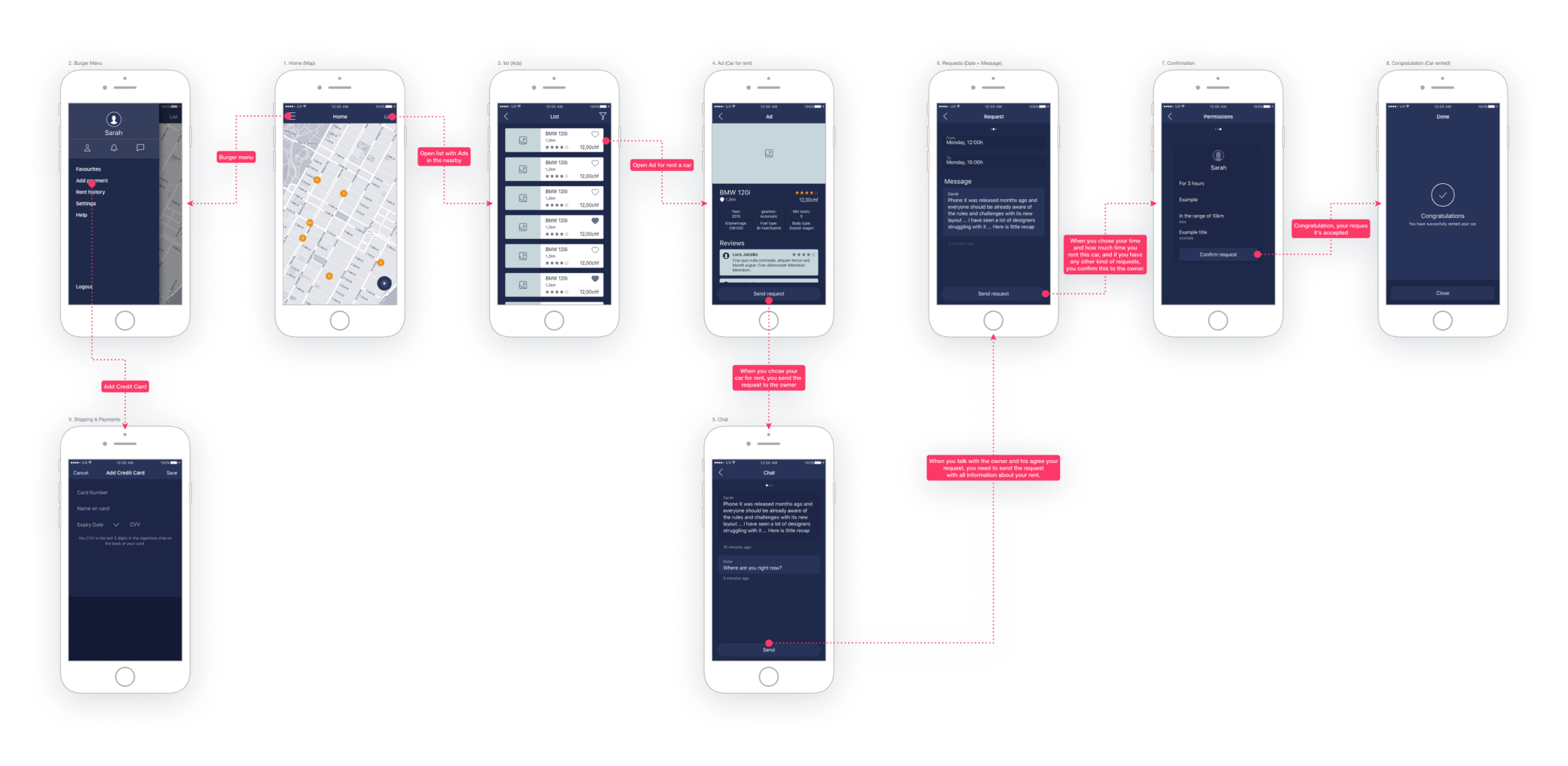Prototyping
Prototyping and testing Sarah's registration process
With the first wireframes in place, I started to prototype and tested different parts of the product. I began to check as first Sarah's registration process with four users, and we got feedback to iterate the process.

Iteration Sarah's deal process
This is the key step of my iteration process. Here I work on the key features of this product. I need to test the product thoroughly, so I can find the best solutions for the product features and help the users to use it in an easily way without thinking or taking too much time in using the app.

Second iteration Sarah's deal process
The process is a continuous iterating and testing until than I will find the best experience for the product and the users

Iteration Peter's deal process
Following Sarah's process, I found a solution to Peter's deal process. Peter doesn't have a map because his goal is to give the car to the users on the app, so his home screen is a list of cars that he wants to rent.
























